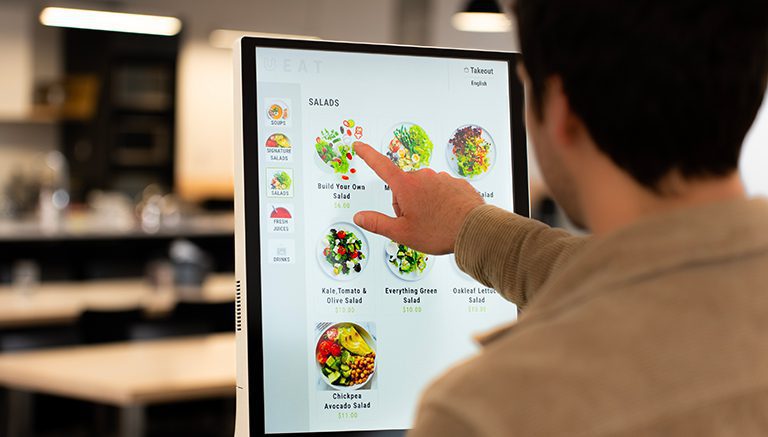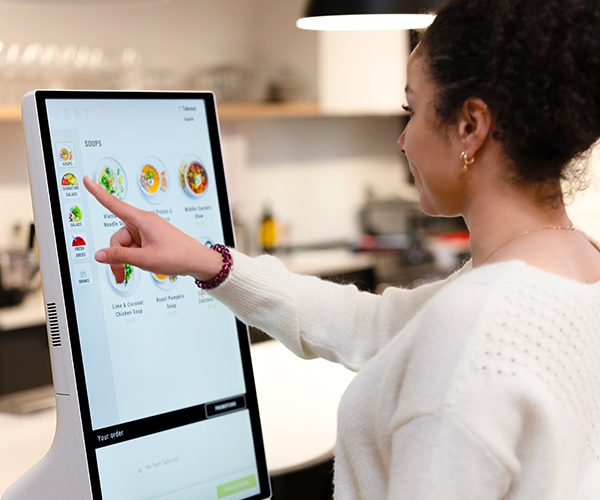While digital self-service kiosks are nothing new to the industry, with some quick-service restaurants (QSRs) offering this option for years, they are nevertheless gaining in popularity in an era of a crippling staff shortage.
Let’s look into the reasons.
1. Inflation is shifting restaurant customer habits
For one, customer habits and mindsets have drastically changed. Skyrocketing inflation is leading customers to shift from high-end dining to more affordable options like fast-casual and quick-service (QSRs) restaurants.
In an interview with Restaurant Dive, Andrew Custage, Head of Insights at Medallia Market Research, indicated that a recent survey showed that “there is some trade down occurring where maybe if somebody was going to a sit-down restaurant beforehand, they’ll turn to takeaway fast casual or quick-service restaurants more often.”
Many industry experts also explain that customers are also shying away from delivery and turning to takeout options to save a few bucks knowing that prices are higher on third-party apps due to the hefty commissions they charge.
Self-ordering solutions allow customers to either pre-order online via an online ordering platform and Order with Google, or use on-premise kiosks, providing convenience, speed, and more affordable options customers crave.
2. Restaurateurs invest in tech to address operational challenges
As with many sectors, the restaurant industry is facing a crippling labor shortage. Many restaurants have been forced to modify their opening hours and increase prices to both pay higher wages and mitigate supply costs. An increasing number of independent restaurant owners and chains are turning to kiosks to cope with the lack of staff. Kiosks enable restaurant managers to reassign front-of-the-house staff to other value-added tasks that elevate customer satisfaction.
Another interesting aspect is the use of kiosks during slow periods. Restaurateurs don’t have to pay a cashier to wait behind the cash register in case guests arrive. Independent owners who often have to operate on their own during slow periods don’t have to run from the kitchen to the cashier, eliminating time-wasting back and forths. In addition, they can proactively prepare food with kitchen staff to get ready for upcoming rush periods.
Finally, restaurant contactless tableside ordering apps and kiosks are also conducive to accelerating table turnover time for on-premise dining and optimizing the wait staff’s productivity.
3. Benefits of restaurant kiosks
Improved order accuracy
With digital kiosks, customers can place their orders without the chance of miscommunication with a cashier. Fully visual menus reduce customer mistakes in placing an order for the wrong items. This results in more accurate customer orders and less wasted food for the restaurant!

Less reliance on staff
As mentioned before, kiosks and other self-service restaurant technologies can help a restaurant minimize the impact of being unable to recruit, train and retain qualified front-of-the-house employees. In addition, restaurateurs can easily configure their kiosks to design a seamless, quick and enjoyable experience every time. No more constantly telling cashiers to smile, be polite or upsell. Check out this latest case study on how a restaurant was able to generate 75,000 orders with no cashier!
Automatic upselling
Ahh…upselling. Kiosks do an amazing job of upselling menu items. Restaurateurs can configure their kiosks to gently upsell high-margin or more products, combos or more expensive menu items—and customers can confidently add them to their orders without the guilt or shame that a cashier will judge them. Rather than rely on employees to think about upselling occasionally, kiosks upsell every single time!
Maximized capacity and revenues
Thanks to kiosks, restaurateurs can increase their revenues by at least 12-22% when properly integrated into their customer journeys. Restaurants can serve more customers in less time, generating an uptick in sales. Combined with higher average ticket sizes with upselling, kiosks can substantially impact a business’ profitability.
Access to customer data
One of the most important aspects for a restaurant’s long-term success is accessing customer data. Also known as first-party data, this type of data (first name, last name, email, for example) is given willingly to a restaurant by customers in exchange for something they value: a subscription to a newsletter to get special discounts, a loyalty program to earn points and perks, etc. Customers who use a kiosk can be prompted to enter their information quickly and even get an immediate reward, like a freebie or rebate, on their next orders. This data can then be used by the restaurant for further marketing purposes and analyzing the popularity of menu items for better inventory management and customer demographics.
The bottom line? Self-ordering kiosks are the wave of the present and future for restaurants to overcome today’s challenges. Customers of all ages and backgrounds are already receptive to this new way of ordering and consider kiosks as tools to make their dining experience fast and convenient. Any technology that delights customers is a surefire way of increasing your profits.

Subscribe to our newsletter for the latest insights in restaurant management
By clicking the button above, you agree that UEAT will use your information to contact you about relevant products, content and events. You can unsubscribe from these communications at any time. For more information, see our Privacy Policy.



